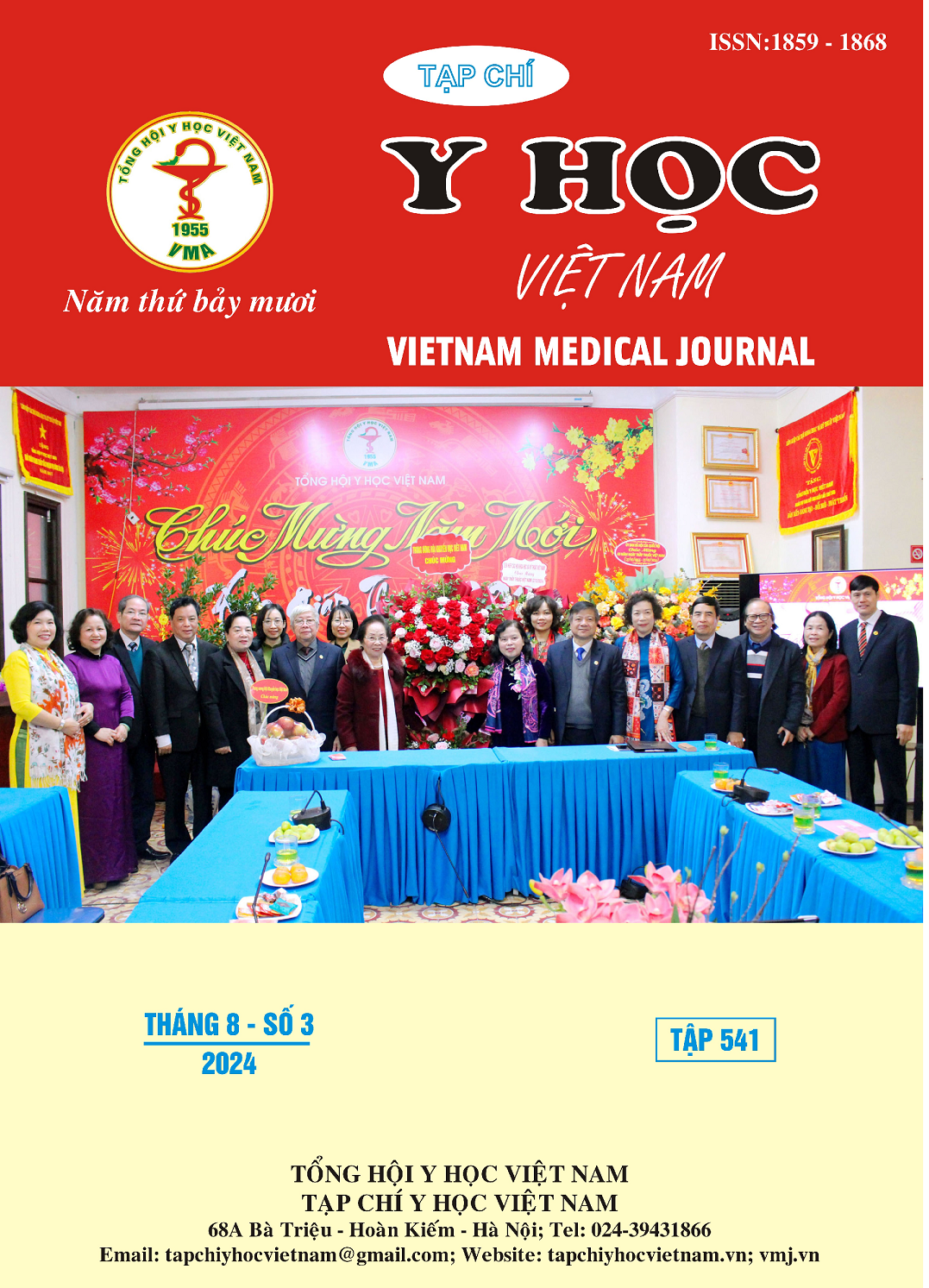THE PRESENCE OF MECA AND MECI GENES AND THE LEVEL OF RESISTANCE TO THE ANTIBIOTIC METHICILLIN IN STAPHYLOCOCCUS AUREUS BACTERIA ISOLATED AT CAN THO CITY GENERAL HOSPITAL IN 2023-2024
Main Article Content
Abstract
Background: Staphylococcus aureus is one of the leading causes of community and hospital-acquired infections. The mechanism of resistance to β-lactam antibiotics includes the ability of bacteria to produce β-lactamase and the presence of the mecA gene, in which the genetic resistance mechanism is considered more important. Objective: Determine the rate of mecA and mecI gene mutations and the resistance level of Staphylococcus aureus bacteria isolated at Can Tho City General Hospital in 2023-2024. Method: Cross-sectional descriptive study, data collected with a sample size of 81 S.aureus strains, from April 2023 to April 2024. Results: 81 S. aureus strains were isolated, of which 65 strains had a resistance phenotype and were PCR positive for mecA, 16 strains were positive for mecI. There is a relationship between bacterial strains carrying MecA or mecI genes and some patient characteristics such as age, gender and drug resistance of bacterial strains. Conclusions: Significant prevalence of the mec gene was found among MRSA isolated from clinical samples, potentially responsible for antibiotic resistance in MRSA.
Article Details
Keywords
Staphylococcus aureus, MRSA, mecA, mecI, antibiotic resistance.
References
2. McCallum N. et al. (2010). Regulation of antibiotic resistance in Staphylococcus aureus International Journal of Medical Microbiology 300: 118–129 121
3. Murakami, K., Minadime W., Wanda K., Nakamura E., Teraoka H., and Watanabee S. (1991). Identification of methicillin-resistant strains of staphylococci by polymerase chain reaction. J. Clin. Microbiol. 29:2240-2244.
4. Nagarajan Abimannanet al. (2019), Clonal clusters and virulence factors of methicillin-resistant Staphylococcus Aureus: evidence for community-acquired methicillin-resistant S. Aureusinfiltration into hospital settings in Chennai, South India, Indian journal of medical microbiology. 37(3), tr. 326 336.
5. Sharma VK, Hackbarth CJ, Dickinson TM, Archer GL., (1998) Interaction of native and mutant MecI repressors with sequences that regulate mecA, the gene encoding penicillin binding protein 2a in methicillin-resistant staphylococci. J Bacteriol. Apr;180(8):2160-6.
6. Stijn Blotet al. (2022), Healthcare-associated infections in adult intensive care unit patients: Changes in epidemiology, diagnosis, prevention and contributions of new technologies, Intensive and Critical Care Nursing. 70, tr. 103227.
7. Voss A., Doebbeling N.B. (1995). The worldwide prevalence of methicillin-resistant Staphylococcus aureus. International Journal of Antimicrobial Agents 5:101-106.
8. Upama Gaireet al. (2021), Antibiotic Susceptibility, Biofilm Production, and Detection of mec A Gene among Staphylococcus aureus Isolates from Different Clinical Specimens, Diseases. 9(4), tr. 80.


